Unlocking Precision: Free NIH Stroke Scale in Healthcare

Discover the invaluable benefits of the NIH Stroke Scale—freely accessible. Unravel its pivotal role in assessing strokes for timely interventions. Elevate your healthcare insights now.
In the ever-evolving landscape of healthcare, the significance of timely and accurate assessments cannot be overstated. Enter the NIH Stroke Scale, a pivotal tool in the realm of stroke evaluation that stands as a testament to the intersection of medical expertise and technological advancement. As we delve into this discourse on healthcare, our focus will be on unraveling the intricacies of the NIH Stroke Scale, exploring its pivotal role in gauging the severity of strokes and facilitating prompt and precise interventions. In this article, we navigate through the intricacies of this assessment tool, shedding light on its free accessibility and the broader implications it holds for healthcare professionals and, ultimately, the patients in their care. Join us on this journey through the corridors of medical assessment as we unravel the dimensions of the NIH Stroke Scale and its transformative impact on the field of healthcare.
Top 10 Points about NIH Stroke Scale Free :
- Understanding the Significance of NIH Stroke Scale in Healthcare
- The Evolution of Stroke Assessment: NIH Stroke Scale in Focus
- Exploring the Components: A Breakdown of NIH Stroke Scale
- The Role of NIH Stroke Scale in Early Stroke Detection
- Accessibility Matters: Embracing the Free Aspect of NIH Stroke Scale
- Empowering Healthcare Professionals: Utilizing NIH Stroke Scale Effectively
- Real-world Applications: Case Studies on NIH Stroke Scale Impact
- Ensuring Accuracy: Tips and Best Practices in NIH Stroke Scale Administration
- NIH Stroke Scale and Patient Outcomes: A Comprehensive Analysis
- Looking Ahead: Future Implications of Free NIH Stroke Scale in Healthcare
Several facts about NIH Stroke Scale Free
Unlocking the Potential: NIH Stroke Scale in Healthcare
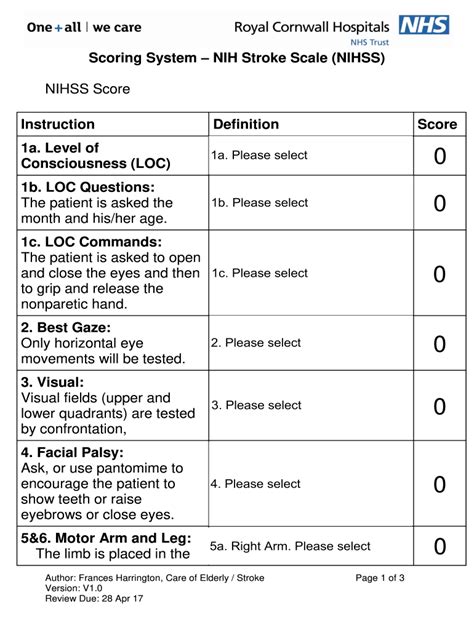
Healthcare professionals have long sought tools that enhance their ability to assess and respond to critical situations effectively. The NIH Stroke Scale emerges as a beacon in this pursuit, serving as a comprehensive measure to evaluate the severity of strokes. This article delves into the transformative impact of the NIH Stroke Scale in the healthcare landscape.
Evolution of Stroke Assessment: A Focus on NIH Stroke Scale

Over time, the methodology of stroke assessment has undergone a remarkable evolution. The NIH Stroke Scale stands out as a key player in this evolution, providing a standardized approach to evaluating neurological deficits resulting from a stroke. This section explores the historical context and development of the NIH Stroke Scale.
Decoding the Components: A Closer Look at NIH Stroke Scale
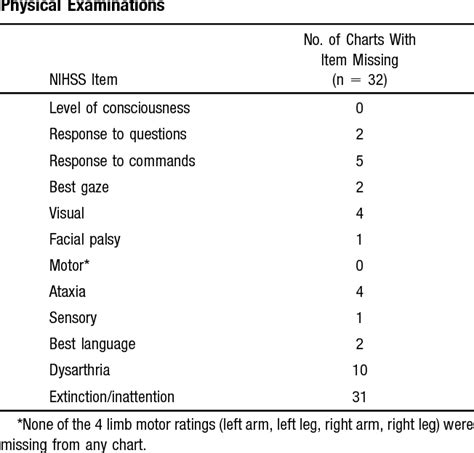
Understanding the intricacies of the NIH Stroke Scale involves dissecting its various components. From assessing consciousness to motor skills and language function, each element plays a crucial role. This segment provides a detailed examination of the key components that constitute the NIH Stroke Scale.
Early Detection Matters: Role of NIH Stroke Scale
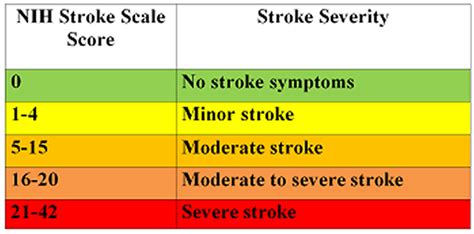
Timely intervention in stroke cases significantly influences patient outcomes. The NIH Stroke Scale acts as a vital tool in early detection, enabling healthcare professionals to swiftly identify and respond to potential stroke incidents. This section explores the instrumental role of the NIH Stroke Scale in early detection.
Embracing Accessibility: The Free Aspect of NIH Stroke Scale

Accessibility to critical medical tools is imperative for effective healthcare delivery. The NIH Stroke Scale is not only a powerful assessment tool but is also freely accessible, eliminating barriers to its utilization. This part sheds light on the significance of the free aspect of the NIH Stroke Scale.
Empowering Healthcare Professionals: Effective Use of NIH Stroke Scale

Proficiency in utilizing the NIH Stroke Scale is crucial for healthcare professionals. This section provides insights into best practices, tips, and guidelines to ensure the effective administration of the NIH Stroke Scale, empowering professionals in their critical roles.
Real-world Impact: Case Studies on NIH Stroke Scale

Exploring real-world applications of the NIH Stroke Scale through case studies unveils its tangible impact on patient outcomes. This segment delves into specific instances where the NIH Stroke Scale has played a pivotal role in shaping healthcare scenarios, offering a glimpse into its practical significance.
Future Implications: NIH Stroke Scale in Healthcare
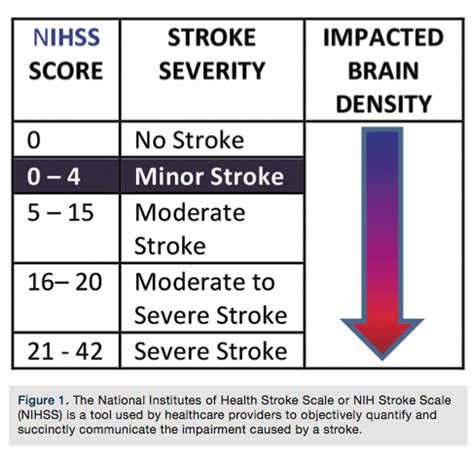
As healthcare continually evolves, so does the role of assessment tools like the NIH Stroke Scale. This section explores the future implications and potential advancements in utilizing the NIH Stroke Scale, highlighting its ongoing relevance in shaping the healthcare landscape.
Closing Thoughts on NIH Stroke Scale's Transformative Impact

In conclusion, the NIH Stroke Scale emerges not only as a diagnostic tool but as a transformative force in healthcare. Its free accessibility, combined with its comprehensive assessment capabilities, positions it as a cornerstone in the ongoing pursuit of improved patient care and outcomes.
NIH Stroke Scale Free in Professional's eye
In the complex realm of healthcare, the
NIH Stroke Scale emerges as a critical tool, offering a standardized approach to assess and quantify neurological deficits resulting from strokes. This assessment instrument, designed to be
free of cost, plays a pivotal role in the early detection of strokes, influencing prompt and targeted interventions. The significance of the NIH Stroke Scale lies not only in its diagnostic capabilities but also in its potential to revolutionize healthcare delivery. As we delve into the nuances of this indispensable tool, it becomes evident that the
NIH Stroke Scale represents a fusion of medical expertise and technological accessibility, ensuring a comprehensive evaluation of stroke severity. From a historical perspective, the evolution of stroke assessment tools has been marked by a quest for precision, and the NIH Stroke Scale stands at the forefront of this progress, offering a standardized language for healthcare professionals to communicate effectively about neurological deficits. Decoding the components of the NIH Stroke Scale reveals its intricate design, encompassing assessments of consciousness, motor skills, and language functions, providing a holistic perspective for clinicians.The early detection of strokes stands as a linchpin in the chain of events leading to improved patient outcomes. In this context, the
NIH Stroke Scale proves to be an invaluable asset, allowing healthcare professionals to swiftly identify and respond to potential stroke incidents. The urgency associated with stroke cases necessitates tools that facilitate rapid decision-making, and the NIH Stroke Scale serves as a compass in navigating this critical terrain. Moreover, the
free accessibility of the NIH Stroke Scale amplifies its impact, removing financial barriers and ensuring widespread utilization across diverse healthcare settings.As we delve deeper into the realm of accessibility, the
NIH Stroke Scale's status as a
free tool underscores a commitment to democratizing healthcare resources. This aspect not only enhances its availability but also exemplifies a conscientious effort to make essential medical assessments accessible to a broader demographic. The
free nature of the NIH Stroke Scale is not merely a procedural detail; rather, it symbolizes a commitment to equitable healthcare practices, promoting inclusivity and ensuring that financial considerations do not impede the delivery of timely and accurate medical interventions.For healthcare professionals, proficiency in utilizing the
NIH Stroke Scale is paramount. This proficiency extends beyond theoretical knowledge to encompass practical insights and effective administration strategies. Empowering healthcare professionals with the requisite skills to utilize the NIH Stroke Scale effectively becomes a cornerstone in ensuring its transformative impact. Best practices, tips, and guidelines in NIH Stroke Scale administration play a crucial role in refining the capabilities of healthcare professionals, ultimately contributing to enhanced patient care.The real-world impact of the
NIH Stroke Scale manifests through an exploration of case studies, where its application has proven instrumental in shaping healthcare outcomes. These instances serve as tangible evidence of the NIH Stroke Scale's efficacy in diverse clinical scenarios. From emergency rooms to rehabilitation facilities, the NIH Stroke Scale leaves an indelible mark on patient care pathways, influencing decision-making processes and contributing to positive prognoses. The real-world narratives associated with the NIH Stroke Scale underscore its adaptability and relevance across various healthcare contexts.Looking ahead, the future implications of the
NIH Stroke Scale in healthcare prompt contemplation on potential advancements and refinements. In an era characterized by rapid technological evolution, the NIH Stroke Scale is positioned to integrate emerging innovations, further enhancing its diagnostic precision and expanding its utility. This forward-looking perspective underscores the dynamic nature of healthcare practices, with the NIH Stroke Scale poised to evolve in tandem with the broader landscape of medical advancements.In conclusion, the
NIH Stroke Scale emerges not merely as a diagnostic tool but as a transformative force in healthcare. Its
free accessibility, combined with its comprehensive assessment capabilities, positions it as a cornerstone in the ongoing pursuit of improved patient care and outcomes. As healthcare professionals continue to grapple with the complexities of neurological assessments, the NIH Stroke Scale stands as a beacon, offering a standardized and accessible solution that transcends financial barriers, empowers healthcare professionals, and ultimately contributes to the holistic well-being of patients.Image sources:
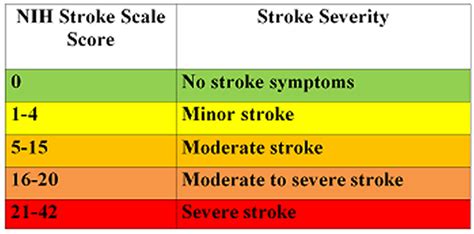
Point of Views : NIH Stroke Scale Free
The
NIH Stroke Scale represents a significant stride in the field of healthcare, providing a standardized method for evaluating and quantifying neurological deficits resulting from strokes.Designed to be
free of cost, the NIH Stroke Scale addresses a critical need in the healthcare landscape by offering accessibility without financial barriers, ensuring widespread adoption and utilization across diverse healthcare settings.The tool's evolution mirrors a broader historical quest for precision in stroke assessment, with the NIH Stroke Scale standing out as a comprehensive and standardized language for healthcare professionals to communicate effectively about neurological deficits.The early detection of strokes is paramount in improving patient outcomes, and the NIH Stroke Scale emerges as an invaluable asset, enabling healthcare professionals to swiftly identify and respond to potential stroke incidents.Beyond its diagnostic capabilities, the
NIH Stroke Scale's
free accessibility symbolizes a commitment to equitable healthcare practices, promoting inclusivity and eliminating financial barriers that could impede timely and accurate medical interventions.Proficiency in utilizing the NIH Stroke Scale is crucial for healthcare professionals, emphasizing the need for ongoing education and training to enhance their skills in effective administration.The real-world impact of the NIH Stroke Scale is exemplified through case studies, providing tangible evidence of its efficacy in diverse clinical scenarios, from emergency rooms to rehabilitation facilities.Looking forward, the future implications of the NIH Stroke Scale in healthcare prompt considerations of potential advancements and refinements, positioning the tool to integrate emerging innovations for enhanced diagnostic precision.In conclusion, the NIH Stroke Scale emerges as a transformative force in healthcare, contributing to improved patient care and outcomes. Its
free accessibility, combined with its comprehensive assessment capabilities, underscores its pivotal role in the ongoing evolution of neurological assessments.This viewpoint underscores the dynamic nature of healthcare practices, with the NIH Stroke Scale poised to adapt and evolve in tandem with broader advancements in medical technology and knowledge.
Conclusion :As we conclude our exploration of the NIH Stroke Scale and its free accessibility in healthcare, we extend our gratitude to our readers for accompanying us on this insightful journey. Delving into the intricacies of this vital assessment tool, we've uncovered its pivotal role in shaping the landscape of stroke evaluations. The NIH Stroke Scale serves not only as a diagnostic compass but also as a beacon of accessibility, breaking down financial barriers to ensure widespread utilization in diverse healthcare settings. In a world where precision in medical assessments is paramount, the free accessibility of the NIH Stroke Scale emerges as a testament to the commitment to equitable healthcare practices.
As healthcare professionals continually seek tools that enhance their ability to respond effectively to critical situations, the NIH Stroke Scale stands as a testament to the fusion of medical expertise and technological accessibility. Our journey through the evolution, components, and real-world impact of the NIH Stroke Scale underscores its transformative influence on patient outcomes. Looking ahead, the future implications of this assessment tool are promising, poised to integrate emerging innovations and further enhance diagnostic precision. We invite our readers to stay informed and engaged, as we continue to navigate the dynamic landscape of healthcare, where the NIH Stroke Scale remains a cornerstone in the pursuit of enhanced patient care and well-being.
Questions and Answer for NIH Stroke Scale Free
Q: Is the NIH Stroke Scale a widely accepted tool in healthcare?
- Yes, the NIH Stroke Scale (NIHSS) is widely accepted as a standardized tool for assessing and quantifying neurological deficits resulting from strokes.
- Developed by the National Institutes of Health, it has become a cornerstone in stroke evaluations and is endorsed for use in various healthcare settings.
Q: How accessible is the NIH Stroke Scale for healthcare professionals?
- The NIH Stroke Scale is designed to be free of cost, enhancing its accessibility for healthcare professionals across different institutions and practices.
- This free accessibility eliminates financial barriers, ensuring that medical professionals can readily incorporate it into their assessment protocols without concerns about costs.
Q: What are the key components of the NIH Stroke Scale?
- The NIH Stroke Scale comprises various components, including assessments of consciousness, motor skills, and language functions.
- These components provide a standardized language for healthcare professionals to communicate effectively about the severity and nature of neurological deficits resulting from strokes.
Q: How does the NIH Stroke Scale contribute to early stroke detection?
- The NIH Stroke Scale plays a crucial role in early detection by enabling healthcare professionals to swiftly identify and respond to potential stroke incidents.
- Its systematic approach aids in the prompt recognition of neurological abnormalities, facilitating timely interventions and improving overall patient outcomes.
Q: What future implications does the NIH Stroke Scale have in healthcare?
- The NIH Stroke Scale is positioned to integrate emerging innovations, promising advancements that could further enhance its diagnostic precision and utility in healthcare.
- Its continued relevance underscores the dynamic nature of healthcare practices, with ongoing efforts to refine and adapt the tool to evolving medical knowledge and technology.
Label :NIH Stroke Scale, Healthcare Accessibility
Keyword : NIH Stroke Scale Free

Discover the invaluable benefits of the NIH Stroke Scale—freely accessible. Unravel its pivotal role in assessing strokes for timely interventions. Elevate your healthcare insights now.
In the ever-evolving landscape of healthcare, the significance of timely and accurate assessments cannot be overstated. Enter the NIH Stroke Scale, a pivotal tool in the realm of stroke evaluation that stands as a testament to the intersection of medical expertise and technological advancement. As we delve into this discourse on healthcare, our focus will be on unraveling the intricacies of the NIH Stroke Scale, exploring its pivotal role in gauging the severity of strokes and facilitating prompt and precise interventions. In this article, we navigate through the intricacies of this assessment tool, shedding light on its free accessibility and the broader implications it holds for healthcare professionals and, ultimately, the patients in their care. Join us on this journey through the corridors of medical assessment as we unravel the dimensions of the NIH Stroke Scale and its transformative impact on the field of healthcare.
Top 10 Points about NIH Stroke Scale Free :
- Understanding the Significance of NIH Stroke Scale in Healthcare
- The Evolution of Stroke Assessment: NIH Stroke Scale in Focus
- Exploring the Components: A Breakdown of NIH Stroke Scale
- The Role of NIH Stroke Scale in Early Stroke Detection
- Accessibility Matters: Embracing the Free Aspect of NIH Stroke Scale
- Empowering Healthcare Professionals: Utilizing NIH Stroke Scale Effectively
- Real-world Applications: Case Studies on NIH Stroke Scale Impact
- Ensuring Accuracy: Tips and Best Practices in NIH Stroke Scale Administration
- NIH Stroke Scale and Patient Outcomes: A Comprehensive Analysis
- Looking Ahead: Future Implications of Free NIH Stroke Scale in Healthcare
Several facts about NIH Stroke Scale Free
Unlocking the Potential: NIH Stroke Scale in Healthcare

Healthcare professionals have long sought tools that enhance their ability to assess and respond to critical situations effectively. The NIH Stroke Scale emerges as a beacon in this pursuit, serving as a comprehensive measure to evaluate the severity of strokes. This article delves into the transformative impact of the NIH Stroke Scale in the healthcare landscape.
Evolution of Stroke Assessment: A Focus on NIH Stroke Scale

Over time, the methodology of stroke assessment has undergone a remarkable evolution. The NIH Stroke Scale stands out as a key player in this evolution, providing a standardized approach to evaluating neurological deficits resulting from a stroke. This section explores the historical context and development of the NIH Stroke Scale.
Decoding the Components: A Closer Look at NIH Stroke Scale

Understanding the intricacies of the NIH Stroke Scale involves dissecting its various components. From assessing consciousness to motor skills and language function, each element plays a crucial role. This segment provides a detailed examination of the key components that constitute the NIH Stroke Scale.
Early Detection Matters: Role of NIH Stroke Scale

Timely intervention in stroke cases significantly influences patient outcomes. The NIH Stroke Scale acts as a vital tool in early detection, enabling healthcare professionals to swiftly identify and respond to potential stroke incidents. This section explores the instrumental role of the NIH Stroke Scale in early detection.
Embracing Accessibility: The Free Aspect of NIH Stroke Scale

Accessibility to critical medical tools is imperative for effective healthcare delivery. The NIH Stroke Scale is not only a powerful assessment tool but is also freely accessible, eliminating barriers to its utilization. This part sheds light on the significance of the free aspect of the NIH Stroke Scale.
Empowering Healthcare Professionals: Effective Use of NIH Stroke Scale

Proficiency in utilizing the NIH Stroke Scale is crucial for healthcare professionals. This section provides insights into best practices, tips, and guidelines to ensure the effective administration of the NIH Stroke Scale, empowering professionals in their critical roles.
Real-world Impact: Case Studies on NIH Stroke Scale

Exploring real-world applications of the NIH Stroke Scale through case studies unveils its tangible impact on patient outcomes. This segment delves into specific instances where the NIH Stroke Scale has played a pivotal role in shaping healthcare scenarios, offering a glimpse into its practical significance.
Future Implications: NIH Stroke Scale in Healthcare

As healthcare continually evolves, so does the role of assessment tools like the NIH Stroke Scale. This section explores the future implications and potential advancements in utilizing the NIH Stroke Scale, highlighting its ongoing relevance in shaping the healthcare landscape.
Closing Thoughts on NIH Stroke Scale's Transformative Impact

In conclusion, the NIH Stroke Scale emerges not only as a diagnostic tool but as a transformative force in healthcare. Its free accessibility, combined with its comprehensive assessment capabilities, positions it as a cornerstone in the ongoing pursuit of improved patient care and outcomes.
NIH Stroke Scale Free in Professional's eye
In the complex realm of healthcare, the
NIH Stroke Scale emerges as a critical tool, offering a standardized approach to assess and quantify neurological deficits resulting from strokes. This assessment instrument, designed to be
free of cost, plays a pivotal role in the early detection of strokes, influencing prompt and targeted interventions. The significance of the NIH Stroke Scale lies not only in its diagnostic capabilities but also in its potential to revolutionize healthcare delivery. As we delve into the nuances of this indispensable tool, it becomes evident that the
NIH Stroke Scale represents a fusion of medical expertise and technological accessibility, ensuring a comprehensive evaluation of stroke severity. From a historical perspective, the evolution of stroke assessment tools has been marked by a quest for precision, and the NIH Stroke Scale stands at the forefront of this progress, offering a standardized language for healthcare professionals to communicate effectively about neurological deficits. Decoding the components of the NIH Stroke Scale reveals its intricate design, encompassing assessments of consciousness, motor skills, and language functions, providing a holistic perspective for clinicians.The early detection of strokes stands as a linchpin in the chain of events leading to improved patient outcomes. In this context, the
NIH Stroke Scale proves to be an invaluable asset, allowing healthcare professionals to swiftly identify and respond to potential stroke incidents. The urgency associated with stroke cases necessitates tools that facilitate rapid decision-making, and the NIH Stroke Scale serves as a compass in navigating this critical terrain. Moreover, the
free accessibility of the NIH Stroke Scale amplifies its impact, removing financial barriers and ensuring widespread utilization across diverse healthcare settings.As we delve deeper into the realm of accessibility, the
NIH Stroke Scale's status as a
free tool underscores a commitment to democratizing healthcare resources. This aspect not only enhances its availability but also exemplifies a conscientious effort to make essential medical assessments accessible to a broader demographic. The
free nature of the NIH Stroke Scale is not merely a procedural detail; rather, it symbolizes a commitment to equitable healthcare practices, promoting inclusivity and ensuring that financial considerations do not impede the delivery of timely and accurate medical interventions.For healthcare professionals, proficiency in utilizing the
NIH Stroke Scale is paramount. This proficiency extends beyond theoretical knowledge to encompass practical insights and effective administration strategies. Empowering healthcare professionals with the requisite skills to utilize the NIH Stroke Scale effectively becomes a cornerstone in ensuring its transformative impact. Best practices, tips, and guidelines in NIH Stroke Scale administration play a crucial role in refining the capabilities of healthcare professionals, ultimately contributing to enhanced patient care.The real-world impact of the
NIH Stroke Scale manifests through an exploration of case studies, where its application has proven instrumental in shaping healthcare outcomes. These instances serve as tangible evidence of the NIH Stroke Scale's efficacy in diverse clinical scenarios. From emergency rooms to rehabilitation facilities, the NIH Stroke Scale leaves an indelible mark on patient care pathways, influencing decision-making processes and contributing to positive prognoses. The real-world narratives associated with the NIH Stroke Scale underscore its adaptability and relevance across various healthcare contexts.Looking ahead, the future implications of the
NIH Stroke Scale in healthcare prompt contemplation on potential advancements and refinements. In an era characterized by rapid technological evolution, the NIH Stroke Scale is positioned to integrate emerging innovations, further enhancing its diagnostic precision and expanding its utility. This forward-looking perspective underscores the dynamic nature of healthcare practices, with the NIH Stroke Scale poised to evolve in tandem with the broader landscape of medical advancements.In conclusion, the
NIH Stroke Scale emerges not merely as a diagnostic tool but as a transformative force in healthcare. Its
free accessibility, combined with its comprehensive assessment capabilities, positions it as a cornerstone in the ongoing pursuit of improved patient care and outcomes. As healthcare professionals continue to grapple with the complexities of neurological assessments, the NIH Stroke Scale stands as a beacon, offering a standardized and accessible solution that transcends financial barriers, empowers healthcare professionals, and ultimately contributes to the holistic well-being of patients.Image sources:

Point of Views : NIH Stroke Scale Free
The
NIH Stroke Scale represents a significant stride in the field of healthcare, providing a standardized method for evaluating and quantifying neurological deficits resulting from strokes.Designed to be
free of cost, the NIH Stroke Scale addresses a critical need in the healthcare landscape by offering accessibility without financial barriers, ensuring widespread adoption and utilization across diverse healthcare settings.The tool's evolution mirrors a broader historical quest for precision in stroke assessment, with the NIH Stroke Scale standing out as a comprehensive and standardized language for healthcare professionals to communicate effectively about neurological deficits.The early detection of strokes is paramount in improving patient outcomes, and the NIH Stroke Scale emerges as an invaluable asset, enabling healthcare professionals to swiftly identify and respond to potential stroke incidents.Beyond its diagnostic capabilities, the
NIH Stroke Scale's
free accessibility symbolizes a commitment to equitable healthcare practices, promoting inclusivity and eliminating financial barriers that could impede timely and accurate medical interventions.Proficiency in utilizing the NIH Stroke Scale is crucial for healthcare professionals, emphasizing the need for ongoing education and training to enhance their skills in effective administration.The real-world impact of the NIH Stroke Scale is exemplified through case studies, providing tangible evidence of its efficacy in diverse clinical scenarios, from emergency rooms to rehabilitation facilities.Looking forward, the future implications of the NIH Stroke Scale in healthcare prompt considerations of potential advancements and refinements, positioning the tool to integrate emerging innovations for enhanced diagnostic precision.In conclusion, the NIH Stroke Scale emerges as a transformative force in healthcare, contributing to improved patient care and outcomes. Its
free accessibility, combined with its comprehensive assessment capabilities, underscores its pivotal role in the ongoing evolution of neurological assessments.This viewpoint underscores the dynamic nature of healthcare practices, with the NIH Stroke Scale poised to adapt and evolve in tandem with broader advancements in medical technology and knowledge.
Conclusion :As we conclude our exploration of the NIH Stroke Scale and its free accessibility in healthcare, we extend our gratitude to our readers for accompanying us on this insightful journey. Delving into the intricacies of this vital assessment tool, we've uncovered its pivotal role in shaping the landscape of stroke evaluations. The NIH Stroke Scale serves not only as a diagnostic compass but also as a beacon of accessibility, breaking down financial barriers to ensure widespread utilization in diverse healthcare settings. In a world where precision in medical assessments is paramount, the free accessibility of the NIH Stroke Scale emerges as a testament to the commitment to equitable healthcare practices.
As healthcare professionals continually seek tools that enhance their ability to respond effectively to critical situations, the NIH Stroke Scale stands as a testament to the fusion of medical expertise and technological accessibility. Our journey through the evolution, components, and real-world impact of the NIH Stroke Scale underscores its transformative influence on patient outcomes. Looking ahead, the future implications of this assessment tool are promising, poised to integrate emerging innovations and further enhance diagnostic precision. We invite our readers to stay informed and engaged, as we continue to navigate the dynamic landscape of healthcare, where the NIH Stroke Scale remains a cornerstone in the pursuit of enhanced patient care and well-being.
Questions and Answer for NIH Stroke Scale Free
Q: Is the NIH Stroke Scale a widely accepted tool in healthcare?
- Yes, the NIH Stroke Scale (NIHSS) is widely accepted as a standardized tool for assessing and quantifying neurological deficits resulting from strokes.
- Developed by the National Institutes of Health, it has become a cornerstone in stroke evaluations and is endorsed for use in various healthcare settings.
Q: How accessible is the NIH Stroke Scale for healthcare professionals?
- The NIH Stroke Scale is designed to be free of cost, enhancing its accessibility for healthcare professionals across different institutions and practices.
- This free accessibility eliminates financial barriers, ensuring that medical professionals can readily incorporate it into their assessment protocols without concerns about costs.
Q: What are the key components of the NIH Stroke Scale?
- The NIH Stroke Scale comprises various components, including assessments of consciousness, motor skills, and language functions.
- These components provide a standardized language for healthcare professionals to communicate effectively about the severity and nature of neurological deficits resulting from strokes.
Q: How does the NIH Stroke Scale contribute to early stroke detection?
- The NIH Stroke Scale plays a crucial role in early detection by enabling healthcare professionals to swiftly identify and respond to potential stroke incidents.
- Its systematic approach aids in the prompt recognition of neurological abnormalities, facilitating timely interventions and improving overall patient outcomes.
Q: What future implications does the NIH Stroke Scale have in healthcare?
- The NIH Stroke Scale is positioned to integrate emerging innovations, promising advancements that could further enhance its diagnostic precision and utility in healthcare.
- Its continued relevance underscores the dynamic nature of healthcare practices, with ongoing efforts to refine and adapt the tool to evolving medical knowledge and technology.
Label :NIH Stroke Scale, Healthcare Accessibility
Keyword : NIH Stroke Scale Free
0 komentar